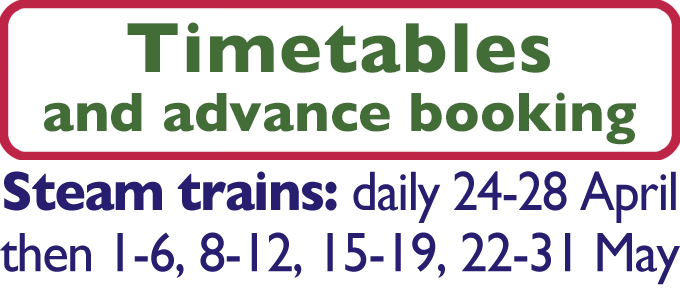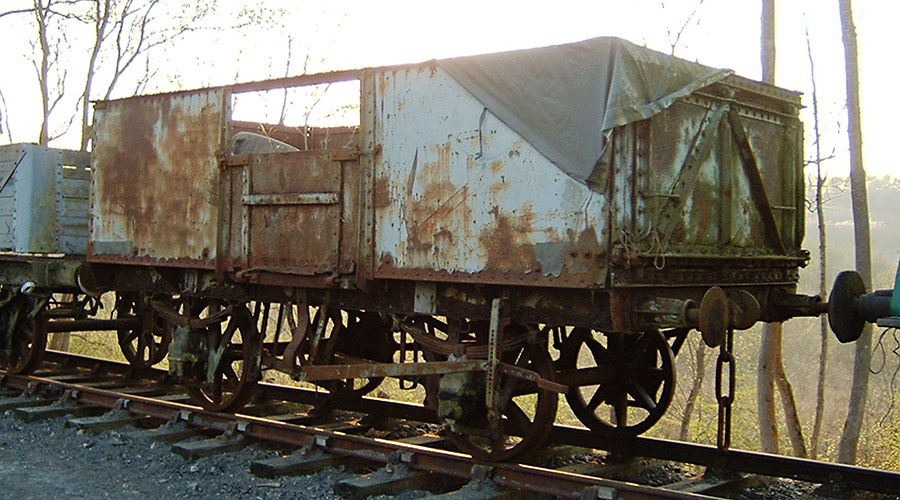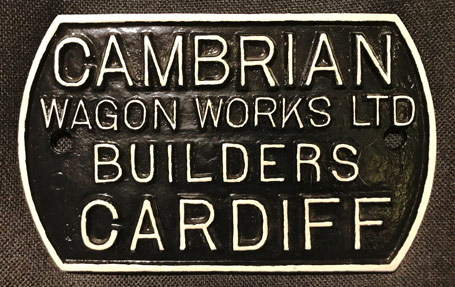This wagon was one of less-than-a-handful of this design in preservation, and is now thought to be a unique survivor. It is a 13 Ton capacity steel mineral wagon built by the Cambrian Wagon Works Limited, probably in 1943 at their works in Cardiff. These were built for private owner customers. This design was significant, even though comparatively few were produced, as a step in the progress towards the eventual "standard" 16 Ton steel mineral wagon.
Prior to World War 2, most coal was moved by rail in wagons owned predominantly by coal merchants or collieries. Coal was vital to the industrial nation that was Great Britain in the 1930's:
Most electricity was generated in coal-fired power stations.
Nearly all gas was produced from coal, a by-product being coke.
Coke and coal were vital to the iron and steel industry.
Most mains water was pumped using coal-fired steam pumps.
Hospitals, schools, public buildings and many homes relied on coal or coke open fires or boilers.
Many industries still used steam-powered line shafts or equipment.
Many vessels in the coastal and merchant fleets were coal-fired.
Nearly all railway locomotives were coal-fired.
The privately-owned wagons made a loaded journey from the colliery to a particular customer and then had to be returned empty to a specific colliery for re-loading. Much time was wasted shunting empty coal wagons in marshalling yards to allow them to return to their individual destinations. With the outbreak of WW2, all coal wagons were put under the control of the wartime Railway Executive Committee and thus could be directed to where there was the greatest need. It should be noted that there were other privately-owned mineral wagons which carried, for example, quarried stone, sand and tarred roadstone. These were not part of the REC pool.
For the first few years of war, as materials and facilities were being directed towards war production, there was little opportunity to replace life-expired wagons. When it became obvious that the increased volume of coal needed would require more wagons to carry it, some material and production capacity was released for the building of 358 of these wagons.
They were built for four customers:
Two for St. Helens Collieries, Nos. 159 & 160 - Registered LMSR (1943) 170998/9
One for A.S.Williams (Liverpool), No. 431 - Registered LMSR (1943) 171000
Five for Pilkington's (St. Helens), Nos. 1895-99 - Registered LMSR (1943) 171931-35
100 for William Cory (London EC3), Nos. 1300-99 - Registered LMSR (1943) 171936-2035
250 for William Cory (London EC3), Nos. 1400-1649 - Registered LMSR (1943) 172086-2335
All privately-owned vehicles had to be registered with one of the four main railway companies in order to be allowed on the main line.
After Nationalisation, all ex-PO wagons in the REC pool were given new numbers with a "P" prefix. These numbers did not correlate with age, capacity, owner, design or registration number. Some wagons (larger, 21T capacity vehicles with steel underframes) received new numberplates but the overwhelming majority did not. The non-pool PO wagons continued into Nationalisation bearing their owners' numbers.
Our wagon survived in BR service until 1958/'59, when it was withdrawn and sold to the Port of Bristol Authority, being renumbered PBA 59685. It was purchased from Bristol by Norman Payne and the late George Nickson for the Bluebell Railway in 1981.
The PBA kept no record of the original numbers of their wagons. There is no evidence of its original owner or number on the wagon. The underframe, not surprisingly for a coal wagon, is badly wasted and will require substantial repair or replacement. For forty years this wagon waited its turn in the queue of historic goods vehicles awaiting restoration, but with its underframe seriously corroded, it was disposed of to a local purchaser in July 2022.
Current status: see Railway Heritage Register
Many thanks are due to Peter Fidczuk for permission to use his research into the development of the 16 Ton steel mineral wagon, which was originally published in Volume 1, Issue Nos. 3 to 5 of Modellers' Back Track magazine in 1991.
The Cambrian Wagon Works survived until late 1992.










